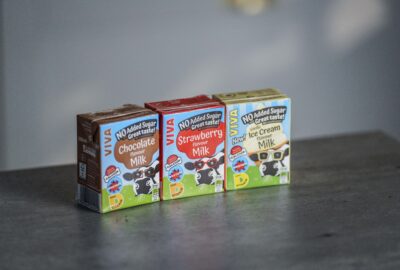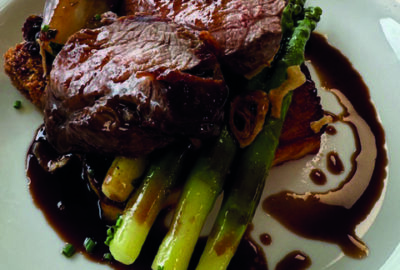Whether shy or outgoing, there’s no doubt about it – children know what they want, or more importantly what they don’t want. As a caterer, this makes life very challenging, especially when you need to encourage a child to eat healthily. From playful presentations to innovative recipes, our expert panel this month share strategies to make nutritious options irresistible for the youngest diners in restaurants and schools alike.
Joel Carr, Development Chef, Young’s Foodservice
Nothing hits the mark quite like a fish finger sandwich! To be honest, even the adults will be tempted by this classic. As well as delicious fish fingers, the bread, roll or even wrap is key to this menu option. Fresh bread or a crispy roll, even a sweet brioche stuffed with Young’s Foodservice’s fish fingers is an easy, quick and tasty option. Add shredded carrot, pickles, caramelised onions, relish, avocado… the list of extras is endless and will make a fish sandwich the star of a menu.
Daniel Matchar, Licensed Social Worker and Therapist
A great kids’ dish should be visually appealing, incorporating colourful and fun elements to attract their attention. Menus should offer a variety of options, catering to different tastes and dietary needs, with about five to seven choices. Replacing traditional options like chicken nuggets with baked versions using whole grains can be a healthier alternative, such as a quinoa rainbow salad. This dish is not only packed with nutritious whole grains but is also visually vibrant, aligning perfectly with our concept of making healthy eating appealing to children. The salad features a mix of colourful vegetables and quinoa, a versatile and child-friendly whole grain. To encourage healthy choices, involve children in the selection process, perhaps through interactive menus or creative names for nutritious dishes. It’s about making healthy eating a fun and engaging experience for them.
Ben Dodaro, Executive Chef at Maria and Enzo’s and Enzo’s Hideaway, Disney Springs, Walt Disney World
I think generally, at least three dishes is a good starting point. Children have different tastes and palates, so you want to have an option that can appeal to anyone. There are plenty of ways to make healthy options for a kid’s menu – use fresh ingredients and offer diverse side options. For example, we offer fruit salad as an alternative to fries at Maria and Enzo’s. One way to encourage children to make healthy choices is to offer smaller versions of items on the adult menu – making them feel more grown up! For example, at Space 220, we offer a Galactic Salmon on the kids’ menu, presented similarly to the salmon on the adult menu.
Sean Cowden, Chef Trainer, London Early Years Foundation
Use your imagination and the fruit you have to create a fruit cake made entirely out of fruit. Making a fresh, no bake dessert not only tastes fresh and delicious, but proves popular with children. They contain no refined sugar, are gluten free and contain lots of fresh, healthy fruit. They are also a great way for children to experiment with new, unusual fruits such as star fruit and Sharon fruit. A watermelon cake is one example, using nothing but fresh melon and seasonal fruit for decoration.
Karen Green, Marketing Manager, Aimia Foods
When it comes to younger children in particular, the look of a dish usually significantly influences the choice made, particularly when it comes to desserts which are all the more appealing when created with colour. Available in strawberry, chocolate and mixed berry, Moosebreak powders can be quickly transformed into large quantities of mousse by simply adding water. What’s more, it has specifically been developed for foodservice environments, allowing school caterers to offer simple yet appealing dessert options that contain all of the nutritional goodness of fresh skimmed milk. For extra nutrition and colour, why not allow children to top their Moosebreak mousse with their favourite fruits? From blueberries to bananas, pineapple to pomegranate, children will love being able to choose the taste and appearance of their dessert
Fred McGinty, Chef & Catering Manager, York House School
Engagement is the most important tool in encouraging children to make healthy choices. Asking for their input and feedback, whilst praising them when they do, helps them, in time, to choose more healthy options. We like to keep dishes quite simple, with ingredients that are separated and can be added together by choice, rather than mixed together from the start. For example, our beef stew is meat and gravy, and we always give the children the option to add in carrots, parsnips, peas etc. separately. This helps to avoid the child feeling overwhelmed and gives them the option to add the vegetables to their dish rather than waste the entire meal simply because they are put off by one element.
Becca Benning, Functional Health Coach, Nutrition Counsellor & Teacher
It is very powerful for children to understand the basic elements of a meal in simple terms. For example, explaining the roles of macronutrients, and where they are coming from in a given menu option. A jacket potato with tuna mayo contains proteins (mostly coming from the tuna), which are building blocks our bodies use for growth and repair. It also contains carbohydrates (mostly coming from the potato) which are our main source of energy and fats (mostly coming from the mayo), used for energy and as building blocks to help cells function and communicate – for instance in the brain.”
Kieran Turner, Chef Manager, Angus Grill + Larder
Making a great dish for children starts with using fresh produce. Far too often you see bigger businesses in hospitality buy in frozen produce for a kid’s menu which is more cost effective but with not a lot of nutritional value at all. Most menus I have put together I normally have five to seven options on it. I would also always have things like veg sticks and fruit bowls on there as most kitchens will have these ingredients just sitting there and having them as an option also helps move the stock and help minimise food wastage. Whilst we still use chips on our menu for children, we always have boiled potatoes in the fridge that can easily be reheated if you want something healthier. On the menu at the grill, we have grilled chicken instead of nuggets. Much healthier and normally with beans or peas but we do get the odd veg stock side for kids.
Ross MacTaggart, Deputy Catering and Events Manager, Downe House School
It is important to make the presentation on the counters/serving areas appealing and inviting and prepare dishes in a way that children prefer i.e. sliced pepper rather than diced and be mindful of our captive audience when using herbs or spices in dishes such as curries. Menus also need to be written in a way so that everyone can understand from Year 7 to Year 13 using simplified language. Our pupils like continuity and familiarity – we see this when they have the opportunity to create a menu for their House Menu Day and we also incorporate this in menu planning. We use seasonal produce whenever possible; the girls always enjoy fresh British strawberries and seasonal produce. Food is very emotive, and our pupils are here more than at home. So, we like them to have some of their home comforts, so we cater for the needs of cultural and religious as well as specific dietary needs.
Iesha Mulla, Parenting expert, and founder of Parental Questions
A great kid’s dish balances nutrition with appeal. We can’t ignore the fact that children are often picky eaters. So, an ideal kid’s dish would contain a mix of protein, carbohydrates, and fruits or vegetables but presented in a visually enticing way. We might incorporate bright colors, interesting shapes, or even a fun theme. I recommend a variety of around five to seven options on a menu. This range gives children a sense of autonomy to choose, without overwhelming them with too many decisions.
Replacing dishes with low nutritional values with healthier alternatives can be an exciting culinary adventure for kids. One option is baking homemade fish fingers using white fish fillets. The fillets can be coated in breadcrumbs with a mix of herbs for added flavour, then baked until crisp. Served with a side of sweet potato fries, which are high in beta carotene and fibre, this makes for a nutritious and child-friendly meal.”


